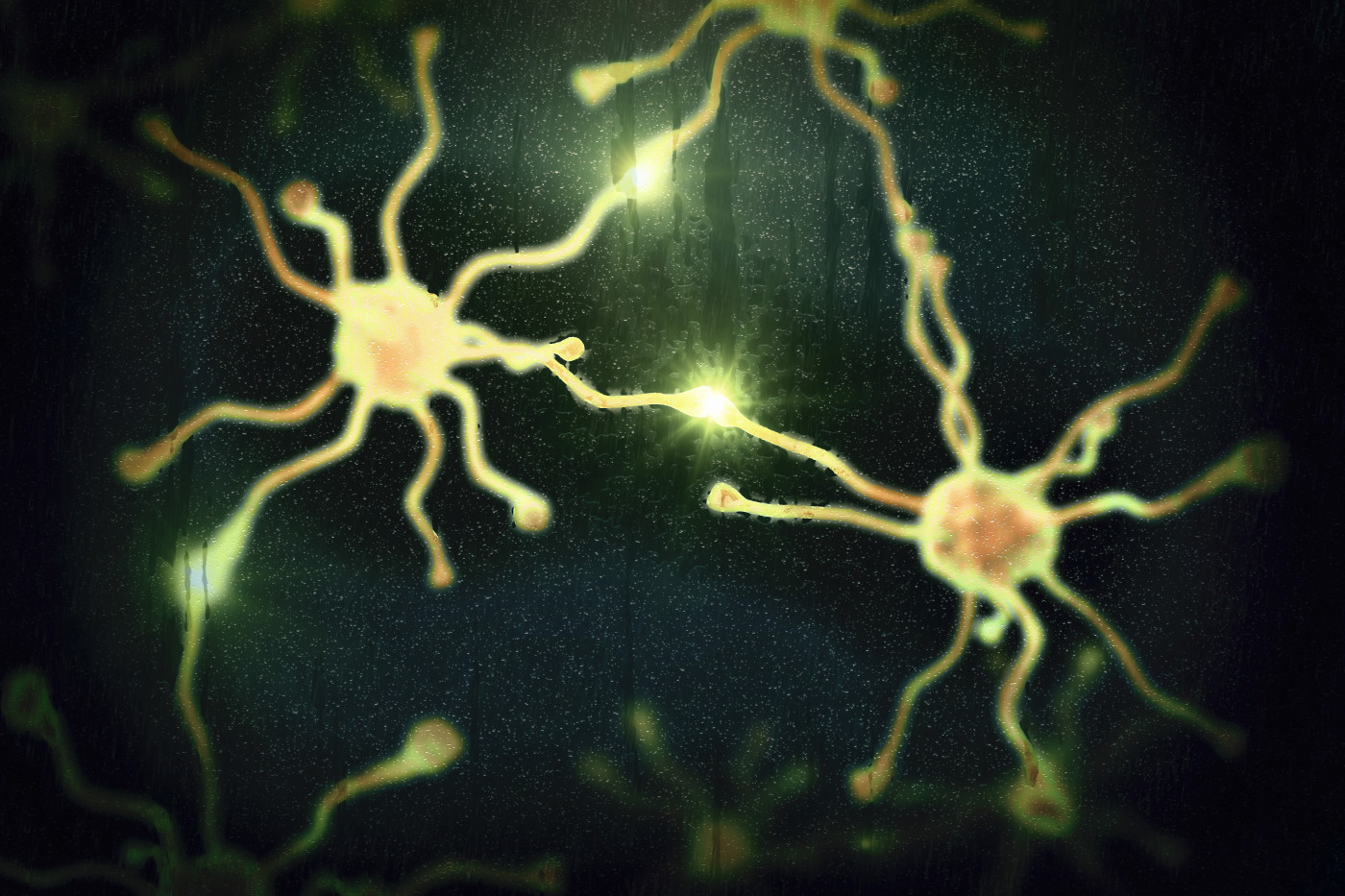Gene That Makes Neurons Vulnerable to Abnormal Levels of Tau Protein Identified in Study

A study has identified the gene that explains why excitatory neurons — brain cells that excite their targets — are more vulnerable to accumulations of abnormal tau protein aggregates, which are implicated in Alzheimer’s disease.
The research article, “A tau homeostasis signature is linked with the cellular and regional vulnerability of excitatory neurons to tau pathology,” was published in the journal Nature Neuroscience.
The accumulation of atypical protein aggregates called tau is a defining feature of Alzheimer’s disease and frontotemporal lobar degeneration. Specific types of neurons are thought to be susceptible to Alzheimer’s disease, Down’s syndrome, and frontotemporal lobar degeneration.
Recent studies have shown that Alzheimer’s disease progressively affects different cell types, and that excitatory cells in brain regions critical to learning and memory — the entorhinal cortex and hippocampus — accumulate tau and are the first to degenerate in the earliest stages of the disease. However, the reasons why specific excitatory neurons are vulnerable to abnormal tau accumulation have not been established.
Excitatory and inhibitory neural signals are the “yin and yang” of the brain. Excitatory signaling from one nerve cell to the next makes the recipient cell more likely to fire an electrical signal. Inhibitory signaling makes the recipient cells less likely to fire. This is the basis of communication between nerve cells in the brain.
“We think there’s a really early, intrinsic difference in the brain cells that are prone to the accumulation of tau protein, which may explain why only certain neurons and brain regions are vulnerable to this problem in early Alzheimer’s,” lead author Hongjun Fu, PhD, said in a press release. “If we can figure out the molecular determinants underlying vulnerability to this disease, it will help us better understand the development of Alzheimer’s disease and potentially could lead to techniques for early detection and targeted treatment.”
To explore the underlying cause of this susceptibility, researchers from various institutes, including the Taub Institute for Research on Alzheimer’s Disease and the Aging Brain, took multiple complementary approaches to studying neurons implicated in Alzheimer’s disease.
Using post-mortem brain samples of Alzheimer’s patients and a mouse model of the disease, the researchers found that atypical tau aggregates built up mainly in excitatory neurons compared with inhibitory neurons. Interestingly, they found susceptible excitatory neurons not only in areas affected early in Alzheimer’s disease but also in areas affected later, such as cortical neurons.
The researchers then looked inside the nucleus — the cellular compartment containing genetic material (DNA) — of individual excitatory and inhibitory neurons from post-mortem healthy human brains to see if there were any differences between the cell types. They found an extensive dissimilarity between excitatory and inhibitory neurons, notably that inhibitory neurons had a stronger activation of genes involved in controlling the aggregation and clearance of tau.
The researchers identified a gene, BAG3, as being more active in inhibitory neurons and possibly central to the maintenance of tau aggregation and clearance. They proposed that inactive BAG3 is linked to excitatory cell vulnerability to tau.
They confirmed that BAG3 levels were substantially lower in excitatory neurons in the brains of individuals with Alzheimer’s disease and those without the disease. Finally, researchers were able to induce tau accumulation in primary cortical neurons by reducing levels of BAG3, which suggests that BAG3 levels are critical to neuron vulnerability to tau aggregates.
The maintenance of tau aggregates in excitatory neuron groups plays a key role in neurodegenerative diseases, states the study, which also sheds light on genes responsible for the stability and maintenance of tau protein.
Researchers now want to understand how individual genes and other factors interact to cause susceptibility to Alzheimer’s and tau-related neurological diseases, with the goal of being better able to detect, treat, and prevent them.
“We anticipate that further demonstrations of the complex and highly regulated interactions between different protein homeostasis [physiological stability] components will reveal more determinants of the vulnerability of specific neuron types,” researchers wrote.
“Lastly, our findings emphasize the importance of pursuing novel therapeutic strategies of enhancing natural defense mechanisms that maintain our proteome [all proteins expressed by cells] in a soluble state and the use of protein homeostasis enhancing therapeutics, especially if they can be designed to target specific cell types, such as vulnerable EX [excitatory] neurons.”






